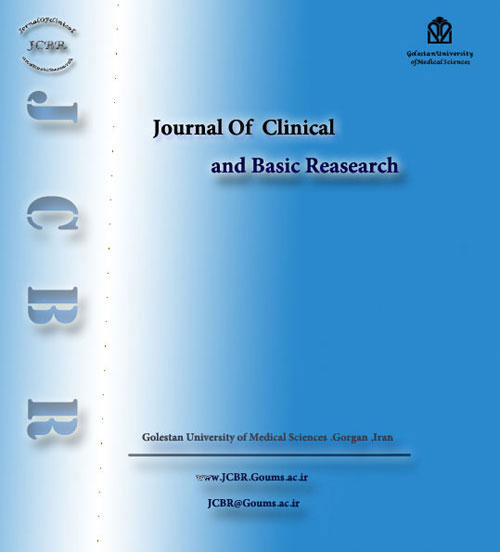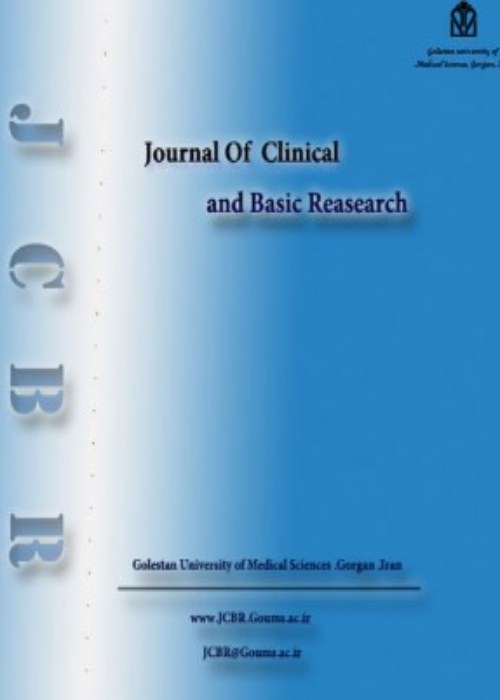فهرست مطالب

Journal of Clinical and Basic Research
Volume:4 Issue: 2, Spring 2020
- تاریخ انتشار: 1399/05/08
- تعداد عناوین: 4
-
Pages 1-7Background
Assessing patient satisfaction with community clinic (CC) services can contribute to promotion of quality of care. This study aimed to investigate the satisfaction level of patients with CC services and to identify the influential determinants of patient satisfaction in a rural area of Bangladesh.
MethodsA cross-sectional study using simple random sampling without replacement was carried out in 2019 on 310 patients who have received services from CCs in Haripur upazila, Bangladesh. The patients completed a questionnaire consisting of 17 items on variables related to patient satisfaction. The items were scored using a 5-point Likert scale and patients socioeconomic and demographic characteristics were also recorded. To examine the association of patient satisfaction with other selected determinants, the Chi-square (χ2) test was performed. To assess the net effect of determinants on satisfaction level, multivariate binary logistic regression analysis was conducted.
ResultsOverall mean satisfaction level was 3.70±0.982. We found that 68.9% were satisfied and 31.1% were unsatisfied with the services. Moreover, 63.92% of females and 77.48% of males were satisfied. In addition, 70% of individuals aged 15-30 years, 69.28% of those aged 31-45 years and 57.89% of patients aged 46-65+ were satisfied with the services. According to the results of the Chi-square test, gender, occupation, receiving necessary medicine, receiving essential treatments, waiting time, behavior of the CC staffs, hygienic atmosphere, internal environment, female health worker visits, and difficulties faced when taking service from CC were significantly associated with patient satisfaction.
ConclusionGiven the important role of patient satisfaction for improving quality of care, it is recommended to cogitate the influential factors when planning for public health promotion.
Keywords: Community clinic, Patient satisfaction, Health care service -
Pages 8-14Background and objectives
Breast cancer is one of the most common types of cancer in women. According to studies, cancer patients who hope to live longer will live longer. Living hope relies on life satisfaction in general as well as on marital satisfaction and social support. The aim of the present study was to investigate the relationship between positive feelings towards spouse and living hope in women with breast cancer.
MethodsThis was a descriptive correlational study. The study population consisted of 125 women with breast cancer who were supported by two charities in Tehran (Iran) during 2018. The subjects were selected by simple random sampling. Data were collected using the Adult State Hope Scale (developed by Snyder et al.) and the Positive Feelings Towards Spouse questionnaire (developed by O'Leary et al.). Obtained data were analyzed with Pearson correlation test and multivariate regression analysis using SPSS software (version 21).
ResultsThere was a significant correlation between positive feelings towards spouse and hope to live (P<0.01). In addition, there was a significant positive correlation between the subscale of feeling towards being with spouse and hope to live (P<0.01).
ConclusionThe results emphasize on the relationship between positive feelings towards spouse and hope to live in women with breast cancer. Therefore, it seems important to offer counseling and couple therapy services to reduce individual and interpersonal psychological distress to prevent aggravation of marital problems during such stressful and critical period.
Keywords: Positive feelings towards spouse, hope, breast cancer, women -
Pages 15-19Background
Testicular regression syndrome (TRS) is defined as the partial or total absence of testicular tissue in 46XY patients with normal external genitalia. The incidence of TRS has been reported to be less than 5% in patients with cryptorchidism. Herein, we report a case of a one-year old boy who underwent surgical exploration with an initial diagnosis of cryptorchidism.
Case descriptiona one-year old male came to the outpatient clinic at Al Emadi Hospital, Doha, Qatar. Physical examination revealed normal external genitalia with palpable right testis and non-palpable left testis. The initial diagnosis was cryptorchidism. Testicular structure was not identified and a presumed testicular remnant in the left superficial inguinal ring was sent for histological examination. The histological examination revealed a fibrovascular nodule, spermatic cord structures, calcification and hemosiderin deposits supporting the diagnosis of TRS.
ConclusionWhen patient fulfills clinical and pathological criteria for TRS, we should consider the possibility of orchiopexy and testicular prosthesis implantation to decrease the risk of testicular torsion and negative psychological effects.
Keywords: Testis, Cryptorchidism, Gonadal dysgenesis, Orchiopexy, Histopathology -
Pages 20-26Background and objectives
Hemorrhage is the most common complication of tonsillectomy. However, the incidence of post-tonsillectomy hemorrhage may be affected by various factors including weight, age, medications, surgical technique, etc. This study was carried out to determine prevalence of post-tonsillectomy hemorrhage in patients undergoing tonsillectomy in a teaching hospital in Gorgan, Iran.
MethodsThis descriptive study was conducted on 1,043 cases of tonsillectomy who were admitted to a referral teaching hospital in Gorgan (Iran) between 2016 and 2017. Data were collected from medical records. Demographics characteristics, the applied surgical technique (e.g., tonsillectomy, adenoidectomy and adenotonsillectomy), the time of bleeding onset, the results of coagulation tests and the method of post-tonsillectomy hemorrhage management were recorded.
ResultsThe frequency of tonsillectomy was 19.2, 50.8, 18.6, 4, 2.1 and 5.3% in subjects aged 0-5, 5-10, 10-15, 15-20, 20-25 and more than 25 year old, respectively. The overall prevalence of post-tonsillectomy hemorrhage was 2.1%. The frequency of post-tonsillectomy hemorrhage was highest (13.6%) in patients aged 20-25 years. The incidence of post-tonsillectomy hemorrhage was zero in those aged ≤5 years. The rate of post-tonsillectomy hemorrhage was 54.5, 31.8 and 13.6% for those undergoing tonsillectomy, adenoidectomy and adenotonsillectomy, respectively. Secondary post-tonsillectomy hemorrhage (after 24 hours) was more common (81.8%). Moreover, the rate of re-admission for controlling the bleeding was 63.4% (14 cases).
ConclusionThe incidence of post-tonsillectomy hemorrhage, the methods for its management and the need for re-admission are quite different in different age groups.
Keywords: prevalence, tonsillectomy, hemorrhage, bleeding


